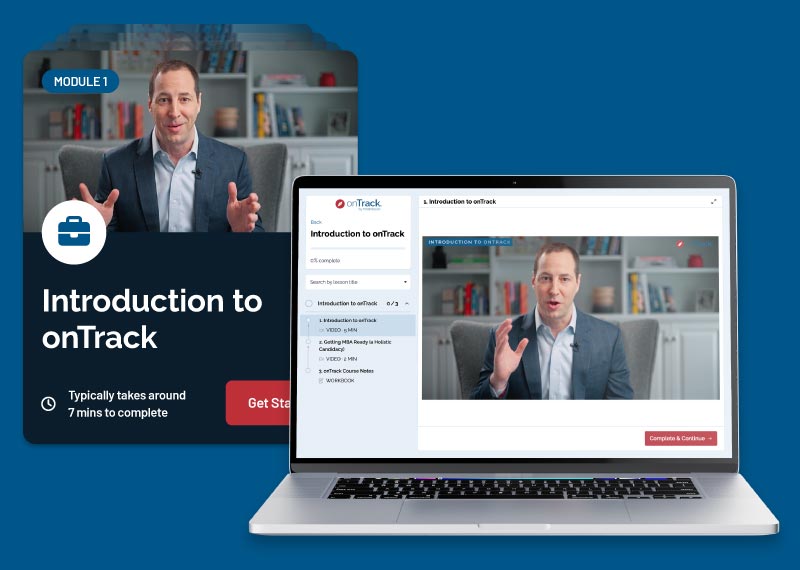In our “What I Learned at…” series, MBAs discuss the tools and skills their business schools provided as they launched their careers.
Mili Mittal is a former mbaMission consultant and now the CEO and cofounder of mor.sl, a recipe recommendations platform designed to help busy professionals cook. mor.sl was recently featured in TechCrunch. Mili received her MBA and a Certificate in Entrepreneurship from the Haas School of Business at the University of California–Berkeley (UC Berkeley Haas) in 2010. In Part 2 of this four-part series, Mili discusses the hands-on experience she gained at Haas and how the lessons she learned continue to help her today.
In Part 1 of this series, I talked about the importance of community in business school. The quality of the people who surround you on campus is arguably the most important factor to consider when deciding which schools to apply to—but it’s obviously not the only one.
As I mentioned before, I chose Haas for its strength in the fields that I ultimately wanted to pursue: entrepreneurship and social responsibility. The greatest thing about the program was that I didn’t actually have to wait two years to work in these fields. With the incredible array of experiential learning integrated into the curriculum and overall Haas experience, I was living and breathing and building in both right away.
 In Kellie McElhaney’s “Strategic CSR [Corporate Social Responsibility] Consulting” course, I not only learned about building smart CSR strategies, but I also implemented my learnings by consulting to eBay and building that company’s social media marketing strategy for its social platforms. Even though I ultimately did not take the CSR career path, the lessons I learned and experiences I had are invaluable in my current path—knowing best practices on how to deploy social media to campaign your cause, build awareness and implement other such strategies is something I use day in and day out at mor.sl. I built on this experience during my summer internship, working for Hewlett Packard’s CSR division, devising the company’s five-year CSR strategic plan.
In Kellie McElhaney’s “Strategic CSR [Corporate Social Responsibility] Consulting” course, I not only learned about building smart CSR strategies, but I also implemented my learnings by consulting to eBay and building that company’s social media marketing strategy for its social platforms. Even though I ultimately did not take the CSR career path, the lessons I learned and experiences I had are invaluable in my current path—knowing best practices on how to deploy social media to campaign your cause, build awareness and implement other such strategies is something I use day in and day out at mor.sl. I built on this experience during my summer internship, working for Hewlett Packard’s CSR division, devising the company’s five-year CSR strategic plan.
In my second semester at Haas, I was writing my first business plan—not for mor.sl, but for a different start-up. This was for the “Entrepreneurship 101” class taught by Professors Jerry Engel and John Danner. At 8:00 a.m. every Thursday morning, for three hours, I worked with three other teammates (Team Awesome) to strategize and iterate, and to build a business model, a pitch deck, a financial model and a marketing plan. Each week, we presented our work to our professors, classmates and a panel of mentors (experienced entrepreneurs and investors), received feedback and continued to iterate. I learned the basics of how to develop and deliver a start-up’s story. I still use materials from this class today! And these professors, for whom I was a Teaching Assistant the following year, became my mentors and friends.
In Professor Sara Beckman’s “New Product Development” class, I learned to build a product without actually building one—minimizing the costs of learning by getting in front of customers early and often. I worked with fellow MBA, engineering and design students to develop and iterate a prototype for a product similar to mor.sl, one designed to preserve ethnic cooking traditions in America.
Meanwhile, in Professors Steve Blank and Eric Ries’s “Customer Development in High Tech Enterprise” course, I learned more than I had bargained for: methods for developing a tech company by “getting out of the building” and finding out what customers need and want. In this class, guest speakers included Dave McClure (500 Startups) and Hiten Shah (KISSmetrics). Think about how much you might pay to see these people speak at a conference—now think about being in a 60-person classroom with each of them for three hours. Amazing.
I also served as fundraising chair for the Global Social Venture Competition and overcame my fear of asking people for money (a critical skill for an entrepreneur). Beyond that, I developed a firsthand perspective of what investors (who served as competition judges) look for when evaluating companies for investment. By participating in a number of on-campus competitions, including the Big Ideas @ Berkeley Contest, the Walmart Better Living Business Challenge and the UC Berkeley Business Plan Competition (now called the UC Berkeley Startup Competition), I learned the key points of pushback on my pitch and was able to modify it accordingly.
I learn best by doing, so I took advantage of a program that offers a lot of doing—Haas—and now find myself applying all that knowledge as I build mor.sl. Maybe you learn better by listening or by analyzing. If so, choose a program that offers a lot of that. You’ll thrive.



